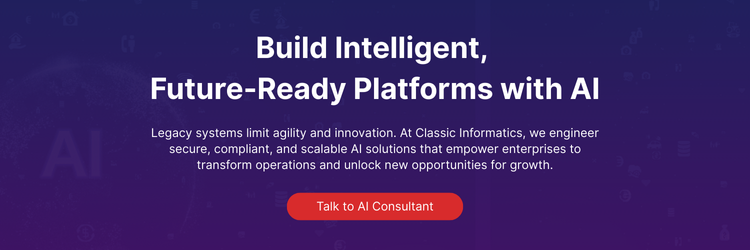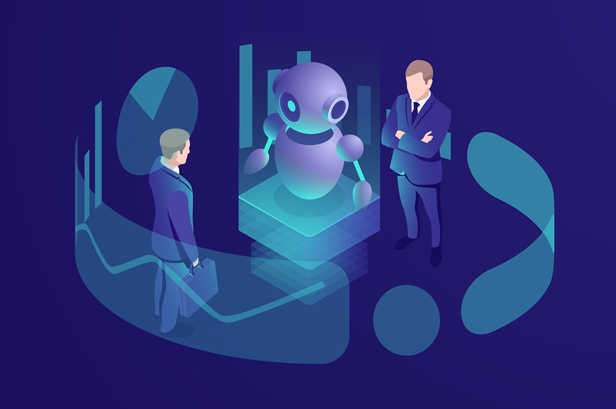Customer support has undergone nothing short of a seismic transformation over the last decade. What was once dominated by traditional call centers, scripted responses, and static FAQ pages has now become a highly dynamic, technology-powered landscape. In 2025, this transformation is accelerating faster than ever, and at its forefront stands a disruptive force: Agentic AI.
These are not just smarter chatbots or improved automation workflows. They are autonomous AI systems capable of understanding, reasoning, deciding, and acting independently. Think of them less as tools and more as digital employees — tireless, scalable, and adaptive. They work alongside human teams to streamline operations, reduce costs, and deliver better customer satisfaction in real time, across every channel.
Why the Shift Was Inevitable
As businesses scale, so do customer interactions. Support teams are no longer managing hundreds of tickets a week — they’re dealing with millions of micro-interactions across chat, social media, email, apps, and voice platforms. At the same time, consumer expectations are skyrocketing:
- Customers want instant answers, not delayed callbacks.
- They expect personalized responses, not one-size-fits-all scripts.
- They demand consistency, whether interacting on WhatsApp, email, or the company website.
For many organizations, this has created an unsustainable gap. Human agents, even with the help of traditional automation tools, cannot keep up with the scale, complexity, and speed required. Basic chatbots or static self-service options, once considered innovative, are now perceived as outdated and frustrating.
The result is clear: companies can no longer afford to rely solely on people or legacy technology to deliver exceptional support. They need intelligent systems that can think, act, and improve continuously.
Enter Agentic AI
This is where Agentic AI steps in. Unlike traditional rule-based bots that follow rigid scripts, Agentic AI agents bring autonomy and adaptability to customer support.
They don’t just answer queries — they:
- Analyze intent behind every interaction, going beyond surface-level keywords.
- Predict needs, anticipating customer actions before they’re explicitly stated.
- Execute tasks across systems — from CRMs to billing platforms — without requiring human intervention.
- Remember context across sessions and channels, ensuring seamless continuity in every journey.
- Collaborate with human teams when judgment, empathy, or complex decision-making is needed.
In practice, this means that a customer asking about a refund doesn’t just get an answer — the agent verifies eligibility, processes the transaction, updates the CRM, and sends confirmation — all autonomously. Meanwhile, if an emotionally charged or high-stakes scenario arises, the AI seamlessly hands over to a human agent with full context preserved.
This balance between autonomy and collaboration is what makes Agentic AI fundamentally different — and why it is being heralded as the next great leap in customer support.
The Business Value at Stake
For enterprises, the shift to Agentic AI is not just about keeping customers happy — it’s about unlocking tangible business value:
- Operational efficiency: Reducing ticket backlogs and agent fatigue by letting AI handle the repetitive, high-volume tasks.
- Cost optimization: Delivering 24/7 omnichannel support without proportionally scaling headcount.
- Customer satisfaction: Offering faster, more accurate, and more empathetic interactions that strengthen brand loyalty.
- Scalable personalization: Delivering individualized responses across millions of customers in real time.
These advantages are already translating into measurable results for early adopters — from lower churn rates to higher Net Promoter Scores (NPS) and customer lifetime value (CLV).
What This Blog Covers
In this blog, we’ll explore how Agentic AI is reshaping customer support in 2025 and beyond. Specifically, we will:
- Trace the technological evolution behind these autonomous systems.
- Break down the architectural components that make them work.
- Explore real-world use cases that demonstrate their value.
- Highlight the benefits and business outcomes they deliver.
- Address the challenges and risks, from ethics to governance.
- Share best practices for deployment so enterprises can adopt with confidence.
By the end, you’ll have a clear roadmap for how to integrate Agentic AI into your customer support strategy — not as an experiment, but as a core capability that redefines how you serve, retain, and delight customers in the years ahead.
The Evolution: From Chatbots → Virtual Assistants → Autonomous Agents
The story of customer support technology over the past two decades can be summed up as a journey from scripted tools to autonomous intelligence. It’s a story of breakthroughs in natural language understanding (NLU), machine learning (ML), and real-time orchestration systems that have progressively transformed how businesses engage with their customers.
At the beginning of this journey were basic chatbots — rule-driven scripts that acted more like glorified search boxes than true conversational partners. Customers typed in keywords, the system matched them to pre-written answers, and a static response was delivered. While these bots did help reduce simple ticket volumes by automating FAQs, they had clear limitations: they lacked nuance, couldn’t grasp context, and often left customers frustrated when conversations went beyond predefined boundaries.
The next phase brought in virtual assistants, powered by better NLU and increasingly sophisticated ML algorithms. Virtual assistants could parse queries more intelligently, offer contextual replies, and even tap into small sets of personalized data. They represented a step forward — interactions started to feel less mechanical and more conversational. However, they still suffered from one critical weakness: they lacked agency. They could inform but not act. They could answer but not decide. They were helpers, not doers.
Now, in 2025, we are entering the era of Agentic AI — systems designed not only to understand and converse, but to reason, decide, and execute tasks across enterprise systems without human intervention. These agents are not merely extensions of automation; they are autonomous digital workers, capable of orchestrating multi-step processes, making real-time decisions, and proactively solving problems at scale.
From Reactive to Proactive Support
Traditional bots — and even most virtual assistants — have been reactive by design. They wait for a customer to ask a question before they respond. If the customer doesn’t reach out, nothing happens.
Agentic AI flips this paradigm. Instead of waiting, it anticipates. By continuously analyzing customer behavior, usage patterns, and historical data, these agents can detect signals of potential issues and intervene early.
For example:
- If a retail customer’s order is delayed in transit, the AI can proactively notify them of the delay, offer alternatives, and even issue compensation credits before the customer has a chance to complain.
- In a SaaS platform, if the AI notices unusual login activity or repeated authentication failures, it can trigger security workflows, reset credentials, and notify the user automatically.
- In telecom, an AI agent can detect a network outage in a customer’s area and send a proactive apology with estimated resolution time and compensation offers — preventing support calls entirely.
This shift from reactive to proactive engagement dramatically enhances customer experience. Instead of solving problems after frustration builds, Agentic AI prevents frustration altogether. Customers feel cared for and valued — not as ticket numbers, but as individuals.
From Static Responses to Dynamic Decision-Making
Legacy chatbots are like actors reading from a script: their conversations are limited to pre-written branches. Even virtual assistants, while more advanced, typically follow decision trees where the next step is predetermined by human designers.
Agentic AI agents, however, build decision trees on the fly. They don’t just follow rules; they reason. Using orchestration frameworks like LangChain, AutoGPT, or OpenDevin, they break down problems into smaller steps, decide the best sequence of actions, and adapt based on outcomes.
Imagine a customer struggling to log in:
- A chatbot might respond with “Please reset your password” and link to a help page.
- A virtual assistant might guide the customer through the password reset process conversationally.
- An agentic AI agent, on the other hand, could check backend authentication logs, determine the issue (e.g., account lockout or expired credentials), autonomously reset access, notify security if suspicious activity is detected, update CRM records, and finally inform the customer that the issue has been resolved.
This dynamic, multi-step reasoning allows agentic systems to solve problems end-to-end, not just provide instructions. The conversation is not static; it evolves in real time based on context, outcomes, and customer intent.
From Single-Task Bots to Multi-Capable Digital Workers
Perhaps the most profound evolution is the transition from narrow-task automation to multi-capable digital workers. Early bots could handle only a single domain — like answering FAQs or booking appointments. Virtual assistants expanded into multi-turn conversations but often still operated in silos.
Agentic AI breaks down these silos. A single AI agent in 2025 can:
- Answer product questions, pulling data from knowledge bases.
- Handle billing queries, checking invoices in ERP systems.
- Manage returns or refunds, connecting with supply chain platforms.
- Escalate technical issues after performing autonomous troubleshooting.
- Proactively upsell or cross-sell based on customer purchase history and intent.
The agent isn’t locked into one role — it switches contexts seamlessly. A conversation might begin with a billing issue, pivot to a product query, and end with a personalized upsell recommendation, all without breaking continuity.
In this sense, agentic AI agents are less like scripts and more like digital colleagues — multi-capable workers that complement human teams. Just as enterprises employ generalist employees who can flex between tasks, agentic systems serve as scalable, always-available digital teammates.
Why This Evolution Matters
This progression — from chatbots to virtual assistants to autonomous agents — is not just a technical milestone. It is a strategic necessity for enterprises.
- Customers no longer tolerate long wait times or generic responses.
- Support teams cannot scale linearly with growing ticket volumes.
- Businesses cannot afford fragmented, inconsistent, or impersonal experiences.
By moving toward Agentic AI, companies unlock:
- Faster resolution times through proactive and autonomous actions.
- Cost efficiency by reducing the load on human agents.
- Customer loyalty by delivering experiences that feel personalized and anticipatory.
- Business growth through AI-driven upselling, retention campaigns, and seamless support.
In short: this evolution is not about replacing humans, but about augmenting them with digital workers that handle scale, complexity, and speed — allowing human teams to focus on empathy, creativity, and high-value interactions.
Key Components & Architecture of a Customer Support AI Agent
Building an agentic AI system for customer support is far more than fine-tuning a large language model (LLM). While foundation models like GPT-5 or Claude form the cognitive core, a true autonomous support agent requires an ecosystem of interlinked modules working in harmony. This ecosystem allows the AI to not only understand customer queries but also reason, plan, and act within enterprise environments — securely, reliably, and at scale.
Below, we break down the key architectural components that make a customer support AI agent intelligent, autonomous, and enterprise-ready.
1. Natural Language Understanding (NLU) & Dialogue Management
At the front end of any support interaction lies language understanding. The NLU engine ensures the system can interpret human language with precision:
- Intent Recognition: Identifying the purpose of the query (“reset my password,” “track my order,” “refund request”).
- Entity Extraction: Pulling out structured data like order IDs, dates, product names, or customer account details.
- Context Management: Maintaining continuity across multi-turn conversations. For example, if a user asks, “Where’s my order?” and follows up with “Can you change the delivery address?”, the system understands both belong to the same order query.
Dialogue managers layer on top of NLU, tracking the conversation state across channels (chat, email, social, voice). They ensure the agent doesn’t just respond in isolation but keeps the interaction flowing naturally — like a human support agent who remembers what was said earlier.
Example: In an e-commerce setting, a customer might ask about an order, switch to asking about returns, and then inquire about loyalty points. Dialogue management ensures all threads remain coherent, without the user needing to restate information.
2. Planning, Reasoning, and Action Modules
These modules give the AI its agentic power — the ability to operate autonomously rather than merely react.
- Planning Modules: Break complex customer requests into logical steps. For instance, resolving a billing dispute may involve verifying transaction history, checking policies, and then issuing a refund.
- Reasoning Engines: Weigh available options using contextual and historical data to decide the best path forward. This can include applying business rules, compliance checks, or prioritizing actions based on urgency.
- Action Modules: Execute the chosen tasks in real time. This may involve querying a database, sending an update to the CRM, triggering workflows in ERP systems, or dispatching a confirmation email to the customer.
Together, these components allow AI agents to function like autonomous digital workers.
Example: If a customer reports, “My internet is down,” an agentic AI could:
- Check backend network diagnostics.
- Attempt remote troubleshooting.
- Inform the customer of the status.
- Schedule a technician if needed.
- Update the case in the ticketing system — without human intervention.
3. Data & Knowledge Integration Layers
Customer support AI is only as effective as the knowledge it has access to. An intelligent architecture must integrate data from across the enterprise:
- Internal Knowledge Sources: FAQs, product documentation, troubleshooting guides, past support tickets.
- Customer Data: User profiles, purchase history, preferences, loyalty status.
- Operational Data: Inventory levels, logistics systems, billing and payments.
- External Data: Third-party APIs for shipping, authentication, or fraud detection.
By unifying these data sources, the AI can create a 360° contextual view of the customer, ensuring responses are both accurate and personalized.
Example: When a customer asks about a delayed delivery, the agentic AI doesn’t just quote generic policy. It checks the real-time logistics API, identifies where the package is, considers the customer’s loyalty tier, and offers compensation if needed — a holistic, intelligent resolution.
4. Learning & Feedback Loops
Agentic AI systems are not static; they learn and evolve continuously.
- Supervised Fine-Tuning: Using labeled customer interactions to refine performance.
- Reinforcement Learning from Human Feedback (RLHF): Training agents to prefer actions that align with business goals and customer satisfaction.
- Self-Learning Optimization: Incorporating signals like response accuracy, resolution rates, and CSAT scores to improve over time.
- Real-Time Retraining: Updating models with new product details, policies, or compliance rules to stay current.
This ensures that agents don’t just respond accurately on day one, but get smarter with every interaction.
Example: If customers frequently rephrase a query that the AI initially misinterprets, the system learns to recognize those variations automatically, reducing future errors.
5. Security, Compliance, and Governance Controls
With great power comes great responsibility. AI agents often handle sensitive customer data — financial details, medical records, personal identifiers — making trust, compliance, and transparency essential.
Key safeguards include:
- Secure APIs & Encryption: Protecting data as it moves between systems.
- Audit Trails: Recording every AI decision and action for compliance and accountability.
- Role-Based Access Control: Ensuring AI agents only access what they need, nothing more.
- Explainability Tools: Providing visibility into why a decision was made, critical for regulated industries.
- Regulatory Compliance: Aligning with GDPR, HIPAA, SOC 2, and emerging AI governance frameworks.
Example: In healthcare, an agent reminding a patient of their appointment must comply with HIPAA privacy rules, ensuring data is encrypted, access is restricted, and audit logs are maintained.
Bringing It All Together
When these components are integrated into a cohesive architecture, the result is a customer support AI agent that can:
- Understand customer intent across natural, multi-turn conversations.
- Reason and plan complex workflows without explicit instructions.
- Act decisively by executing tasks across systems.
- Learn continuously to improve accuracy and performance.
- Operate safely within compliance and governance guardrails.
This is what makes agentic AI not just another automation tool, but a true digital colleague — capable of handling scale, complexity, and personalization in ways that were unimaginable just a few years ago.
Use Cases & Workflows Enabled
The true potential of Agentic AI in customer support lies not just in answering questions, but in the breadth and depth of tasks it can autonomously execute. By bridging natural language understanding with planning, reasoning, and real-time action across enterprise systems, agentic AI agents transform support from a reactive cost center into a proactive, value-driving function.
Below are some of the most impactful use cases and workflows already reshaping the landscape of customer experience.
1. Automating Common Customer Queries
Every support operation faces a long tail of repetitive, high-volume questions:
- “Where’s my order?”
- “I forgot my password.”
- “What are your business hours?”
- “Can I get a copy of my invoice?”
Agentic AI can handle these instantly, at any time of day, across multiple channels. Unlike earlier bots that often misfired due to rigid rules, these agents:
- Parse intent accurately through NLU.
- Pull answers from real-time APIs or knowledge bases.
- Deliver consistent, reliable responses across channels.
Example: An e-commerce retailer integrated Agentic AI into its support stack and saw 60% of inbound queries resolved instantly, reducing ticket load for human agents and improving CSAT by 25%. Customers appreciated the immediacy, while agents were freed to handle higher-value interactions.
2. Executing Multi-Step Transactions Autonomously
Many customer requests go beyond simple Q&A. They require orchestration across multiple systems, decision points, and validations.
Agentic AI is uniquely suited for these because it can:
- Guide the user conversationally.
- Make API calls to back-end systems (ERP, CRM, payment gateways).
- Validate inputs and check eligibility.
- Complete transactions end-to-end.
Examples:
- A SaaS platform customer asks to “switch from a monthly plan to annual billing with a 10% discount.” The AI verifies eligibility, updates the billing system, sends a confirmation email, and issues the new invoice — all autonomously.
- A telecom customer requests to “suspend my service while I’m abroad.” The AI agent validates account status, applies suspension in the billing system, updates the CRM, and notifies the customer with reactivation options.
This reduces customer effort, eliminates delays, and drives first-contact resolution rates up dramatically.
3. Seamless Escalation and Handoff to Humans
While agentic systems are powerful, not every issue should be handled by AI alone. Highly sensitive cases, emotionally charged interactions, or complex exceptions still demand human judgment.
What makes Agentic AI different is how smoothly it manages escalation:
- It recognizes when to hand off — based on sentiment analysis, intent complexity, or compliance rules.
- It transfers the entire context (chat transcript, transaction history, diagnostic steps already taken) to the human agent.
- It stays in the loop, assisting the human agent with suggested next actions, relevant knowledge, or automated lookups.
Example: In healthcare, if a patient expresses distress about a diagnosis, the AI agent can escalate to a human nurse while providing them with context, past medical records, and suggested empathetic scripts. This ensures continuity, avoids repetition, and preserves empathy.
For enterprises, this prevents frustration caused by customers having to “start over” — a common complaint with older chatbots.
4. Proactive Outreach and Engagement
Perhaps the most revolutionary capability of Agentic AI is that it doesn’t just wait to be asked. It can initiate interactions when signals suggest action is needed.
Use cases include:
- Retention: Reminding customers of expiring subscriptions, offering renewal discounts, or alerting them before service disruptions.
- Billing: Notifying customers of failed payments and guiding them to update information.
- Upselling/Cross-Selling: Recommending complementary products or services based on purchase history and real-time context.
- Customer Care: Proactively checking in after service issues, asking for feedback, or offering apologies and credits.
Example: A streaming platform deployed agentic outreach agents that detected reduced usage among subscribers. By proactively offering curated content suggestions and temporary discounts, they reduced churn by 18% over six months.
This shift from reactive to proactive engagement turns support into a revenue enabler rather than just a cost center.
5. Voice and Omnichannel Presence
Customer support in 2025 is inherently omnichannel. Customers expect seamless assistance whether they’re:
- Calling a helpline.
- Chatting on a website.
- Messaging via WhatsApp or Facebook Messenger.
- Sending an email.
- Interacting inside a mobile app.
Agentic AI agents can handle all of these simultaneously, ensuring consistency across channels. Voice support is particularly transformative — with natural speech synthesis and real-time dialogue management, agents can now handle inbound calls conversationally, reducing wait times and reliance on IVR menus.
Example: A travel company’s agentic AI can:
- Answer booking queries via chat.
- Send confirmations via email.
- Provide real-time updates on WhatsApp during a trip.
- Offer voice support when a customer calls about a delayed flight.
The result is a unified customer experience — consistent tone, consistent data, consistent quality, no matter where the interaction happens.
The Bigger Picture
Together, these use cases illustrate how Agentic AI redefines the boundaries of customer support:
- It eliminates low-value friction by automating repetitive queries.
- It delivers end-to-end autonomy for complex workflows.
- It empowers humans, not replaces them, with seamless handoffs.
- It drives retention and revenue through proactive engagement.
- It ensures omnichannel consistency, meeting customers wherever they are.
This isn’t about piecemeal improvements — it’s about creating a holistic support ecosystem where AI and humans collaborate to deliver experiences that are faster, smarter, and more human than ever before.
Benefits: Faster Resolution & Cost Savings
The adoption of Agentic AI in customer support isn’t just a futuristic vision — it’s producing measurable business outcomes today. From improving core support metrics to transforming the economics of service delivery, the benefits are both immediate and long-term. By augmenting human teams and autonomously executing tasks, agentic AI fundamentally reshapes how enterprises think about efficiency, cost, and customer loyalty.
Let’s break down the key areas of impact.
1. Reduced Response and Resolution Times
Traditional support teams often struggle with slow first-response times due to limited staffing, timezone coverage, and manual processes. Even basic automation like chatbots has not solved this fully, as most bots fail when queries become complex or multi-step.
Agentic AI eliminates these delays by:
- Operating 24/7, 365 days a year — always available, without breaks or downtime.
- Executing tasks in real time, from checking order statuses to updating CRMs.
- Autonomously resolving common issues instantly, without waiting for human intervention.
Example: A telecom provider saw its average resolution time for common billing queries drop from 18 hours to less than 2 minutes after deploying an agentic AI support layer. Customers didn’t just get answers — they got immediate actions, like bill corrections or payment confirmations.
The result: higher Customer Satisfaction (CSAT) scores, reduced churn, and increased first-contact resolution (FCR) rates.
2. Significant Cost Savings
Support has traditionally been one of the most resource-intensive functions in the enterprise. Scaling service meant scaling staff — recruiting, training, scheduling, and retaining large teams. This model becomes financially unsustainable as ticket volumes grow.
Agentic AI creates a new equation:
- Automates repetitive queries that make up 60–80% of inbound support volume.
- Reduces reliance on large frontline teams, allowing enterprises to manage more interactions with fewer staff.
- Cuts down on training costs, as AI agents can be instantly updated with new policies, FAQs, and workflows.
- Eliminates costs tied to overtime, shift work, and seasonal hiring, since AI scales elastically.
Example: A global e-commerce brand reduced support costs by 35% year-over-year after implementing agentic AI. Instead of expanding its team by 200 agents to handle seasonal spikes, AI absorbed the additional demand — delivering major operational savings.
This ability to scale support without linear cost increases fundamentally transforms support from a cost-heavy necessity into a scalable growth enabler.
3. Improved Agent Productivity and Satisfaction
Agentic AI doesn’t replace humans — it amplifies them. By taking over repetitive, low-value tasks, AI frees human agents to focus on the interactions where empathy, creativity, and problem-solving matter most.
Benefits include:
- Less burnout: Agents no longer spend hours answering “Where’s my order?” or resetting passwords.
- Smarter workflows: AI pre-fills forms, retrieves customer data, and suggests next-best actions — reducing cognitive load.
- Higher-value focus: Human agents handle escalations, complex negotiations, and sensitive cases where emotional intelligence is key.
This shift not only boosts productivity but also improves agent satisfaction and retention. Instead of feeling like script-followers, agents become strategic problem-solvers, supported by AI assistants.
Example: In a banking contact center, agent turnover dropped by 20% in the first year after introducing AI copilots that automated repetitive compliance steps. Happier agents translated into better customer interactions.
4. Enhanced Customer Experience and Loyalty
For customers, what matters most is speed, accuracy, and personalization. Agentic AI delivers all three consistently.
- Customers get fast answers and resolutions, reducing frustration.
- Interactions feel personalized, with the AI remembering context across channels.
- Responses are accurate and consistent, regardless of time, channel, or agent.
This creates a virtuous cycle: better experiences drive stronger loyalty, and stronger loyalty leads to higher lifetime value (LTV) and lower churn.
Example: A subscription-based SaaS company that adopted agentic AI saw its Net Promoter Score (NPS) increase by 22 points within six months, driven by customers appreciating the ease of getting help without delays or repetition.
In competitive markets, customer experience is the ultimate differentiator — and agentic AI provides a sustainable edge.
5. Ability to Scale During Demand Spikes
One of the hardest challenges for support teams is handling sudden surges in demand. Product launches, holiday sales, viral campaigns, or unexpected service outages can overwhelm even well-staffed teams.
Agentic AI solves this with elastic scalability:
- AI agents can instantly handle thousands of concurrent queries without queuing.
- No need for overtime pay or emergency staffing.
- Consistency in service quality, regardless of volume.
Example: During Black Friday 2024, a retailer’s AI support system handled 5x the normal ticket volume without impacting resolution times. Customers got real-time responses, while human agents focused only on escalations.
This elasticity ensures enterprises never miss opportunities due to poor support capacity — and they avoid the reputational damage of slow or broken service during critical moments.
The Bigger Picture
Agentic AI is more than just a productivity tool. It represents a step-change in the economics and quality of customer support.
- Customers benefit from faster, personalized, and more consistent service.
- Agents benefit from more meaningful work and AI-driven assistance.
- Enterprises benefit from lower costs, scalable operations, and stronger customer loyalty.
In short: Agentic AI improves both sides of the equation — reducing expenses while simultaneously elevating the customer experience. That’s why businesses adopting it now are not only saving money but also creating a competitive moat built on trust, loyalty, and operational excellence.
Challenges & Risks
Despite the benefits, deploying agentic AI isn’t without pitfalls.
-
Risk of hallucinations and incorrect actions
AI agents might make confident but wrong decisions—leading to customer frustration or legal risks. Guardrails, testing, and fallback strategies are crucial to mitigate this.
-
Complex integrations with legacy systems
Many enterprises have fragmented tech stacks. Integrating AI agents with old CRMs, ERPs, or databases can be a bottleneck. APIs, middleware, and data standardization help ease this challenge.
-
Data privacy, security, and compliance
AI agents must handle PII, financial data, and more. Compliance with global regulations requires robust security practices, encryption, and regular audits. Ethical AI principles should also be embedded.
-
Building user trust and transparency
Customers need to know when they’re talking to an AI. Agents should be transparent, offer clear explanations, and respect user preferences. Trust is built through honesty and performance.
-
Internal resistance and change management
Employees may fear AI as a threat to jobs. Companies need to communicate the benefits, offer retraining, and position AI as a tool for empowerment, not replacement.
Best Practices for Deployment
A successful AI support strategy hinges on thoughtful planning and execution.
-
Start small with high-impact use cases
Identify tasks that are repetitive, low-risk, and high-volume. Order tracking, password resets, and account info updates are great starting points. Demonstrate ROI early.
-
Use human-in-the-loop (HITL) models initially
Start with hybrid setups where AI makes suggestions and humans approve actions. This ensures quality while training the system on real-world scenarios. Gradually expand autonomy.
-
Continuously monitor and improve
Monitor conversations, gather feedback, and fine-tune models. Use analytics to track performance metrics and identify failure points. AI is not a set-it-and-forget-it solution.
-
Implement clear escalation and fallback paths
Always have a human safety net. Agents should know when to escalate and transfer context cleanly. This avoids dead ends and user frustration.
-
Establish governance and ethical oversight
Define policies for what AI can and can’t do. Maintain audit logs, explainability frameworks, and ethical guidelines. Involve legal, compliance, and customer experience teams.
-
Align teams and stakeholders
Successful deployments involve cross-functional collaboration. Support, product, engineering, and compliance teams should work together. Executive sponsorship ensures alignment and resource allocation.
Trends & Future Outlook (2025+)
Looking ahead, several trends will shape the evolution of AI agents in customer support.
-
Agentic AI as the default support layer
By 2026, most enterprises will rely on AI agents as the first line of support. Human agents will focus on specialized or empathetic tasks, while AI handles the rest.
-
Emotion-aware and empathetic agents
Advanced sentiment analysis and emotion detection will enable agents to adjust tone, escalate sensitive issues, and offer more human-like interactions. Empathy becomes a competitive edge.
-
Predictive and anticipatory support
AI will detect user issues before they occur—like spotting subscription churn signals or payment failures—and intervene preemptively. This predictive approach enhances customer loyalty.
-
Cross-domain multi-functional agents
Future agents won’t be siloed by department. One agent may handle customer support, upsell recommendations, onboarding tasks, and account management—creating a seamless user experience.
-
Low-latency voice interactions
Advances in real-time voice synthesis and recognition will enable phone-based AI support that feels natural and immediate. Multilingual capabilities will broaden global reach.
-
AI ethics, regulation, and oversight
As AI becomes integral to customer experience, regulators will demand transparency, explainability, and fairness. Enterprises will need robust governance to stay compliant and trusted.
Real-World Examples / Case Studies
-
E-commerce Giant Automates 80% of Customer Chats
A leading online retailer implemented agentic AI to handle queries like order tracking, refunds, and size issues. Result: 80% automation rate, 50% cost reduction, 25% NPS boost.
-
Telecom Company Reduces Average Handling Time by 40%
A telecom firm deployed AI agents with system-level integrations. Agents resolved billing, plan upgrades, and technical issues. Result: reduced AHT by 40%, improved FCR rates.
-
SaaS Vendor Enhances B2B Support with Custom AI Agents
A SaaS firm built domain-specific agents for product onboarding, troubleshooting, and subscription management. Result: scalable support for 10x customer base with zero increase in headcount.
Conclusion & Takeaways
AI agents are no longer futuristic ideas reserved for tech visionaries or speculative whitepapers. In 2025, they are business-critical tools that enterprises across industries are deploying to transform customer support. By combining the ability to understand language, reason through decisions, and autonomously execute tasks, agentic AI has moved far beyond the limitations of traditional chatbots or scripted automation. It is actively redefining how companies engage, retain, and delight customers.
The impact is clear and measurable:
- Faster resolutions that reduce frustration and increase first-contact success.
- Significant cost savings as repetitive, high-volume queries are offloaded to digital agents.
- Elevated agent productivity as human teams focus on complex, empathetic, and strategic work.
- Enhanced customer loyalty driven by experiences that feel personalized, proactive, and consistent.
- Elastic scalability that allows businesses to thrive even during spikes in demand, product launches, or service disruptions.
In short, agentic AI doesn’t just solve today’s customer support challenges — it reshapes the economics and experience of customer care for the future.
More Than Just Chatbots: Building for Success
But achieving this transformation requires more than plugging in a chatbot widget or integrating a language model into your system. Many enterprises that rushed into “AI-first” initiatives in the past learned hard lessons about disjointed experiences, poor governance, or lack of ROI.
Success with agentic AI requires a strategic approach:
- Thoughtful Architectures: Building robust ecosystems that connect foundation models, orchestration layers, memory systems, and execution frameworks.
- Governance and Trust: Embedding compliance, transparency, and accountability into every interaction to safeguard customers and brand reputation.
- ROI-Focused Use Cases: Starting with clear, measurable goals — like reducing ticket resolution time or automating subscription changes — before scaling into broader deployments.
- Change Management: Addressing internal resistance by showing how AI empowers, rather than replaces, human agents.
- Continuous Improvement: Treating AI not as a one-time deployment but as a living system that learns, adapts, and improves with every interaction.
Enterprises that follow these best practices will not only unlock the full potential of agentic AI but will also future-proof their support operations against rising customer expectations and competitive pressures.
The Time to Act is Now
Customer support leaders face growing pressure from cost, complexity, and scale. Ticket volumes are exploding across channels. Customer patience is shrinking. Traditional support models — scaling teams linearly with demand — are no longer viable.
Agentic AI offers a clear path forward:
- Reduce overhead without sacrificing quality.
- Scale operations elastically without human bottlenecks.
- Deliver experiences that delight customers and strengthen brand loyalty.
The enterprises that act decisively in 2025 will define the next era of customer support. Those who wait risk falling behind as customers migrate to brands that deliver seamless, proactive, and intelligent experiences.
Partner with Classic Informatics
At Classic Informatics, we help businesses move from AI exploration to enterprise-grade execution. Whether you’re considering a pilot project to test agentic AI in a single workflow, or you’re ready to scale to enterprise-wide deployment, our teams bring the expertise to:
- Architect resilient agentic ecosystems.
- Integrate AI seamlessly with your existing support stack.
- Ensure compliance and governance from day one.
- Drive measurable ROI with customer-centric design and engineering excellence.
Final Takeaway
AI agents are no longer optional. They are the new foundation of customer support in 2025 and beyond. By acting now, enterprises can deliver support that is faster, smarter, and more human — while gaining the efficiency, savings, and scalability required to grow.
The future of customer support is agentic. The question is: will you lead the change or follow it?
Partner with Classic Informatics to build autonomous customer support systems that deliver real results — fast.





















